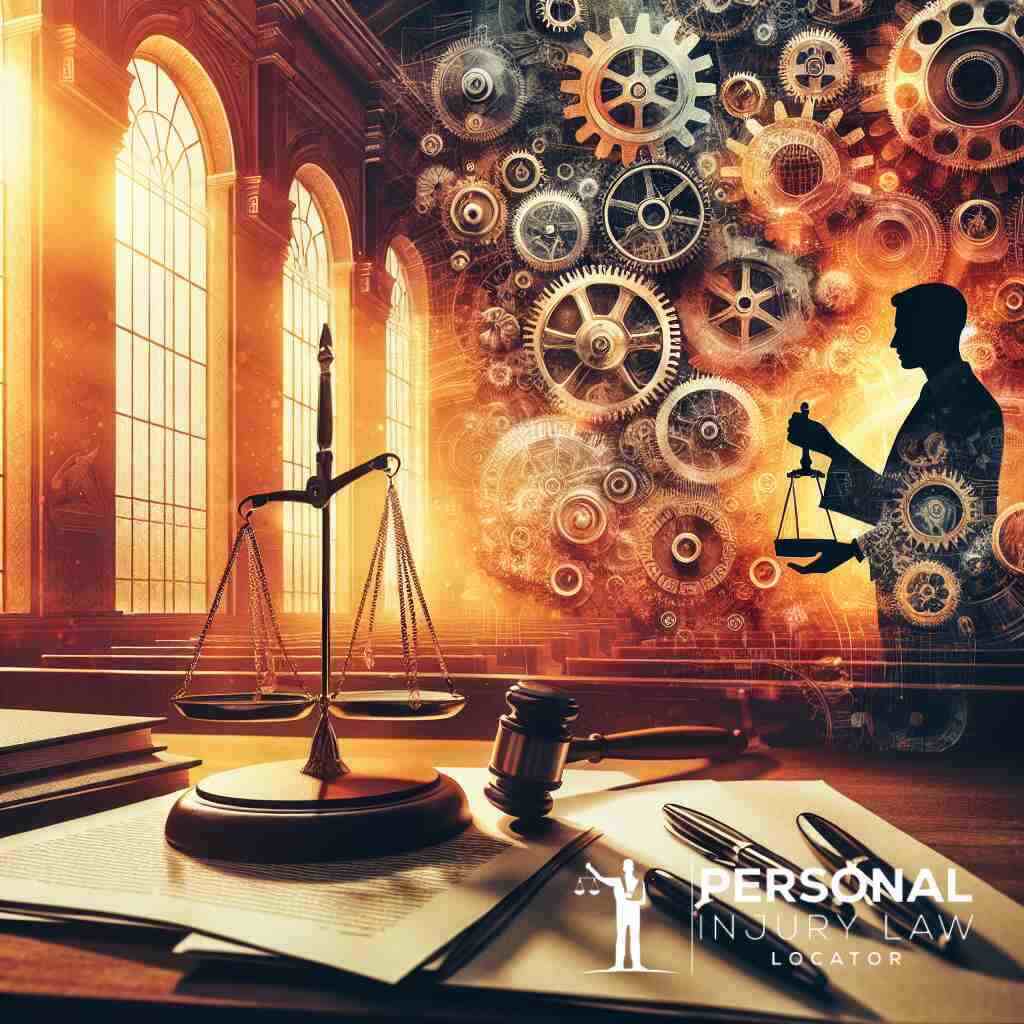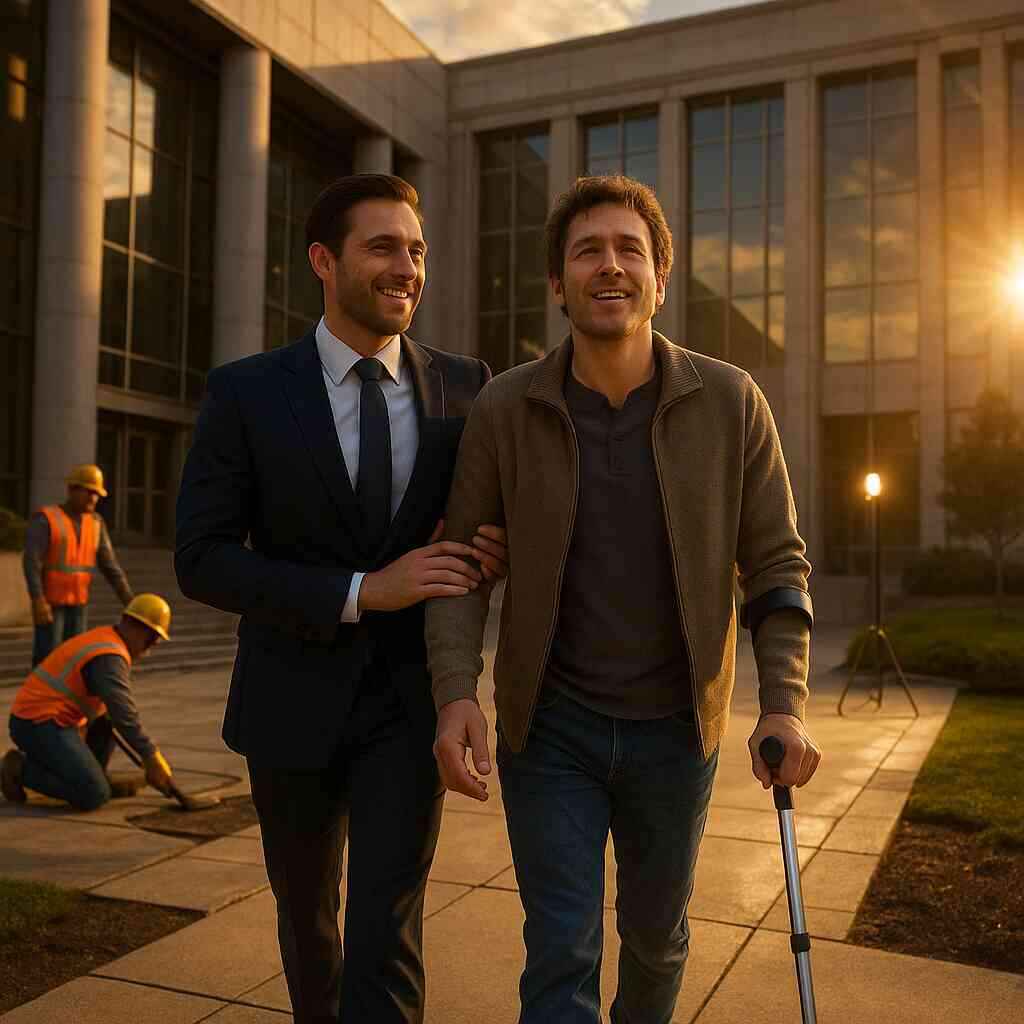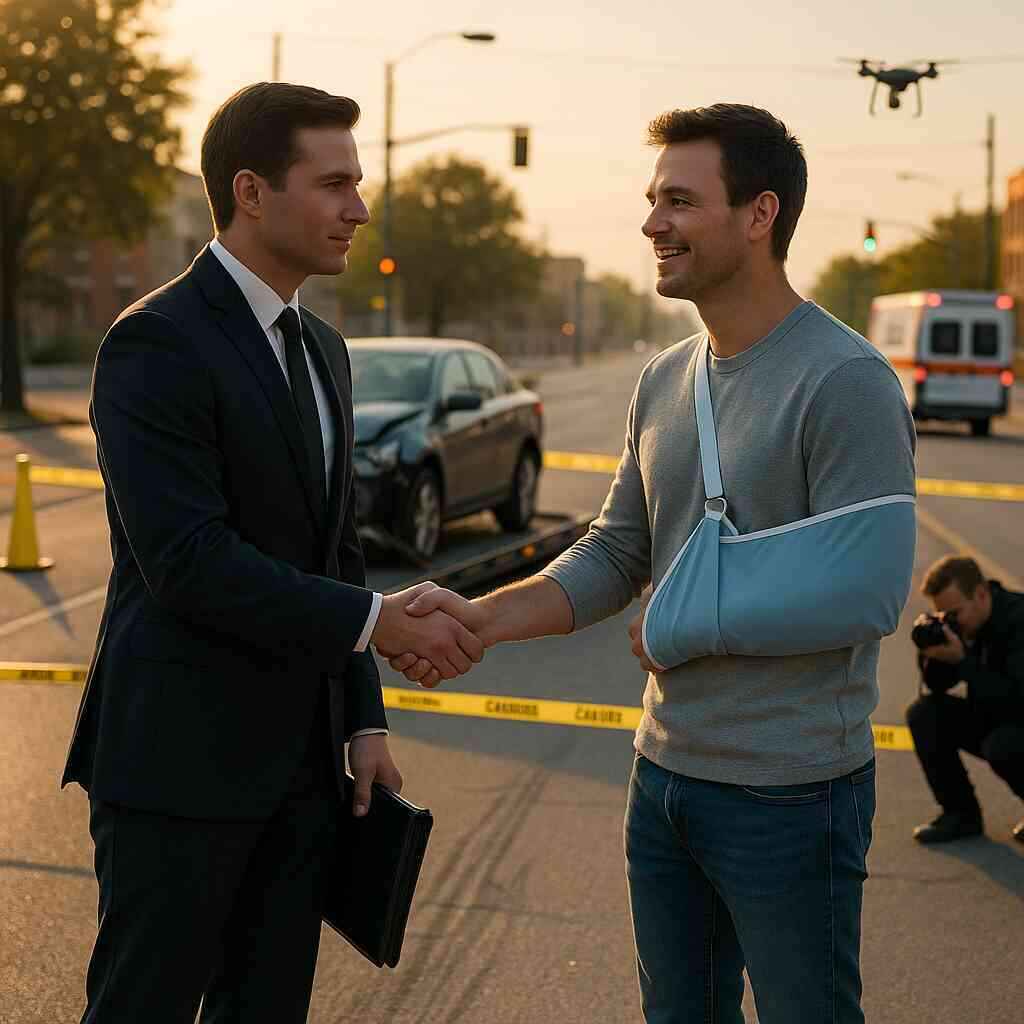 Posted On: 07/01/2025
Posted On: 07/01/2025Crafting the Artful Legal Journey
Understanding Personal Injury Appeal Dynamics
The landscape of personal injury appeals is laden with intricate nuances that beckon the expertise of a seasoned personal injury lawyer. After the initial verdict has been handed down in a civil lawsuit, there often lies the opportunity to challenge the decision through an appeal. This appeal process is a complex legal crossroads where the injured party must critically analyze trial court judgments. Understanding the dynamics of such appeals is essential, as they often hinge on pinpointing legal errors that potentially swayed the trial outcome. In this realm of strategic maneuvering, personal injury lawyer excellence in California and beyond becomes pivotal, providing a wealth of knowledge and insight that helps navigate these murky waters effectively.
Decoding the Appeal Process: An Intricate Pathway
Embarking upon a personal injury appeal process is akin to unfolding a complex legal tapestry. Starting with the notice of appeal, this journey demands an astute comprehension of both procedural and substantive law. Those who undertake this path must be adept at identifying the grounds for an appeal, a task requiring detailed scrutiny of trial records. Such meticulous review helps uncover any procedural or legal missteps that form the bedrock of a strong appeal. Harnessing this level of detail ensures that the appeals court comprehensively understands the issues presented. Additionally, the role of personal injury attorneys near you cannot be overstated, as they are instrumental in decoding and navigating the appeal process to craft compelling appellate arguments.
Importance of a Robust Appellate Brief as Your Legal Canvas
In the realm of personal injury appeals, the appellate brief serves as your legal canvas. It is the quintessential document that conveys the narrative of your legal argument to the court of appeals. Crafting a robust appellate brief requires not only the precise articulation of each legal contention but also the strategic weaving of facts and applicable law. This legal document must present a coherent, persuasive, and compelling argument that showcases deep legal insight. A well-crafted brief connects all elements of your case, creating a persuasive legal tapestry. This foundational document is meticulously scrutinized as it offers the first impression to appellate judges. When executed properly, it transcends the bounds of mere legal writing and evolves into an advocate’s most potent tool in appealing a personal injury case.
1) Mastering Legal Complexity
The Role of Legal Strategy in Personal Injury Appeals
Mastery of legal strategy is the cornerstone of navigating personal injury appeals successfully. Effective legal advocacy in appeals involves a meticulous evaluation of the trial court’s decision to identify potential procedural or substantive missteps. Personal injury lawyers bring a wealth of experience to this process, often scrupulously analyzing the legal pathways available to build a compelling case for appeal. Integral to this strategy is understanding the plaintiff’s position in appeal courts, which involves a robust grasp of nuanced legal principles. This ensures the appellate court judges are presented with a persuasive argument that articulates how errors at the trial court level affected the outcome. Seasoned lawyers evaluate previous similar cases to refine their approach, leveraging legal precedence and past experiences to inform their strategy.
Harnessing Advanced Legal Tactics for a Winning Argument
To maintain an edge in personal injury appeals, the application of advanced legal tactics is indispensable. Lawyers often harness comprehensive legal research, incorporating both legal and factual precedent, to build a solid foundation for their appeal argument. This approach also taps into the rich repository of personal injury lawsuits, allowing the legal team to carve out unique strategies tailored to the specifics of the case. Effective appellate advocacy techniques are applied, embracing innovative methods to communicate complex legal concepts clearly and persuasively. This involves not just presenting facts but weaving them with applicable laws to create a coherent and compelling narrative. Expert personal injury attorneys utilize every tool at their disposal to not only highlight trial court errors but to advocate for their client’s position with vigor and skill.
Navigating the Standard of Review: A Case Study
One of the pivotal aspects of personal injury appeals is the adept navigation of the standard of review in appeals. This legal standard dictates the level of deference the appellate court gives to the lower court’s findings. Understanding and applying this standard is critical, as it influences whether the appeal is approached from a legal error or a factual disagreement perspective. For instance, in a factual determination, the appellate court often gives deference to the trial court’s findings unless there is an apparent error. Conversely, legal conclusions are typically reviewed de novo, meaning the appellate court examines them afresh. Through thoughtful case analysis, lawyers delineate instances where the trial court’s application of the law may have been flawed, using the standard of review to frame their arguments. Thus, personal injury lawyers in Oregon and beyond leverage this strategic comprehension to effectively advocate for their clients, ensuring that appeals are not merely reactive but proactive maneuvers designed for success.
2) Strategic Advocacy in the Appeals Arena
Appellate Court Decisions: Analysis and Insights
Navigating appellate court decisions requires a deep understanding of the legal nuances that govern these high-stakes legal battles. Each decision rendered by the appellate court carries significant implications not only for the individual case but also for broader legal precedents. Personal injury lawyers must engage in a detailed analysis of appellate opinions to extract valuable insights that inform future strategies. This process involves dissecting judicial reasoning and identifying how similar cases have been adjudicated, offering a roadmap for crafting persuasive arguments. The role of seasoned personal injury lawyers in California, known for their excellence in decoding such complex decisions, cannot be overstated, as they set a precedent in shaping winning appeal tactics.
Legal Advocacy: Beyond Trial Court Judgment
Legal advocacy in appeals transcends the boundaries of trial court judgments, requiring a refined approach that leverages legal acumen and strategic foresight. Lawyers are tasked with the monumental challenge of presenting an argument that re-evaluates the trial court’s decision from a fresh perspective. This involves not only addressing potential legal errors made during the initial trial but also advocating for a reinterpretation of facts in light of appellate standards. The craft of appellate advocacy thus becomes a specialized skill, calling for comprehensive knowledge of procedural intricacies and substantive law. Here, legal advocacy in appeals emerges as a critical component, ensuring that every argument is meticulously tailored to resonate with appellate judges and secure a favorable outcome.
Reversing a Verdict: The Intricacies of Appellate Litigation
Reversing a verdict through appellate litigation is an intricate endeavor that demands precision, patience, and profound legal insight. At the core of this process lies the need to demonstrate convincing grounds for an appeal, unraveling the myriad factors that could potentially invalidate a trial court’s judgment. Lawyers must delve into each element of the case, meticulously uncovering errors in application or interpretation of the law. The reversing a court verdict process often involves confronting entrenched legal doctrines and challenging existing interpretations. What makes this pursuit particularly complex is the need to balance rigorous factual analysis with innovative legal arguments, ensuring that the appeal captures the court’s attention and paves the way for justice. For the injured party, partnering with a legal team skilled in these appellate intricacies proves crucial, as these professionals transform the appellate journey into a well-engineered pathway toward potential success.

3) The Intellectual Battleground of Legal Minds
Arguing on Appeal: Crafting Winning Arguments
The art of arguing on appeal is where legal minds truly engage in a high-stakes intellectual dance. To craft winning arguments, a deep dive into prior case law and precedents becomes crucial. A personal injury lawyer must exhibit not only eloquence but also strategic foresight. This involves synthesizing a nuanced understanding of past rulings with the specifics of the current case. Harnessing effective appellate advocacy techniques ensures that each argument presented is both legally sound and compelling. The skill lies in persuasively communicating complex legal theories to the appellate court, often requiring a deft touch and an insightful interpretation of both factual and legal landscapes.
Overcoming Legal Errors in the Trial Court through Appellate Eyes
Identifying and overcoming common legal errors in courts is paramount to appeal success. As the appellate court reviews these errors, lawyers must meticulously highlight mistakes in the trial’s application or interpretation of the law. This isn’t just about pointing out errors; it entails a visionary approach where attorneys present a revised legal narrative that addresses these lapses. Such strategic recalibration ensures that the appellate court is compelled to reconsider the trial verdict. In doing so, personal injury lawyers elevate their clients’ positions, seeking not just to rectify past wrongs but to fortify their legal standing moving forward. This is the essence of thriving in the appellate realm, where each legal twist and turn is navigated with expert precision.
Appellate Advocacy: Elevating Your Case to New Heights
Appellate advocacy is an elegant yet formidable craft, one that involves elevating a case beyond its original confines. This process requires attorneys to deftly reconstruct arguments and unearth new perspectives previously unconsidered. The journey from trial to appellate court transforms an appeal into a quest for judicial redress, where the stakes are higher and the legal acumen required is even sharper. It demands a strategic vision that extends beyond mere correction of judgment to encompass long-term legal consequences and broader justice goals. By maintaining a keen focus on legal principles and employing innovative strategies, lawyers ensure that their appeal not only seeks a reversal but also leaves an indelible imprint on the interpretation of personal injury law. Personal Injury Law Locator provides access to hiring a personal injury lawyer who can navigate these intricate appellate waters with unmatched expertise.
4) Judicial Nuances and Court Procedures Unveiled
Appellate Court Procedures: Navigating the Legal Maze
Understanding appellate court procedures is akin to skillfully maneuvering through a complex legal maze. The personal injury appeal process necessitates familiarity with precise procedural requirements, from filing the notice of appeal to adhering to strict deadlines. Each step must be executed with precision to ensure the appellate court’s engagement and consideration. Personal injury lawyers must grasp the intricacies of submitting briefs, conducting oral arguments, and responding to judges’ queries. This demands meticulous preparation and understanding of procedural norms. The tactical orchestration of these elements can significantly influence the appeal’s outcome, highlighting the lawyer’s ability to transform procedural knowledge into strategic advantage.
Legal Standards of Appeal: A Deep Dive
Delving into legal standards of appeal provides a deeper understanding of how appellate courts evaluate cases. Each personal injury appeal is subject to varying standards of review depending on whether it’s a matter of law or fact. Masterful navigation of these standards is pivotal, as they dictate the deference given to trial court decisions. Lawyers must skillfully argue which standard applies, tailoring their approach to highlight errors in the trial court’s judgment. By leveraging standards such as “de novo” for legal questions or “abuse of discretion” for others, attorneys craft persuasive arguments that guide appellate judges toward a favorable interpretation. This intricate dance of standards serves as the cornerstone of successful appeal advocacy.
Challenging Trial Court Judgment: A Tactical Approach
Challenging a trial court judgment requires a refined tactical approach, often transforming the appeal into a meticulous examination of the initial trial’s integrity. Key to this approach is identifying challenges in trial court judgments, pinpointing procedural or substantive missteps that warrant reconsideration. Lawyers must employ comprehensive case analysis to unearth these faults, ensuring each flaw is spotlighted with precision. Building a strategic roadmap involves not merely rectifying errors but illustrating how these misjudgments impacted the case’s trajectory. Attorneys articulate these points clearly and concisely, advocating for a reassessment that aligns with appellate standards. This carefully tailored approach underscores the appeal’s objective, aiming not just for a reversal but for a decisive reformation of legal interpretation. Personal Injury Law Locator offers insights into such nuances, demonstrating how seasoned professionals turn obstacles into appellate triumphs.
5) The Triumph of Strategic Legal Engineering
Grounds for Appeal: Identifying Key Considerations
In the arena of personal injury litigation, understanding the grounds for an appeal is crucial for turning trial court setbacks into appellate success. Identifying viable grounds for an appeal is where strategic legal engineering manifests, allowing the legal team to pinpoint specific errors that warrant reconsideration. Often, these grounds pivot around procedural errors, misinterpretation of the law, or improperly handled evidence. It’s imperative to leverage tools such as the trial transcript to detect these vulnerabilities. A robust comprehension of grounds for an appeal enables attorneys to craft a narrative that underscores the necessity of appellate review, effectively transforming the potential pitfalls of a trial court decision into opportunities for judicial scrutiny.
Overturning a Dismissal: Finding the Right Trajectory
Successfully overturning a dismissal in a personal injury appeal represents a triumph over judicial discord. This aspect of appellate jurisprudence demands a precise understanding of trial court records and a finely tuned argument that justifies revisiting the initial dismissal. It involves identifying substantive legal errors or procedural deficiencies that compromised the integrity of the trial’s outcome. Attorneys must skillfully delineate how these errors may have unjustly influenced the dismissal, presenting a case for the appellate court to intervene. By framing these arguments around legal precision, attorneys can shift judicial perspectives, creating a trajectory toward potential case revival and advancing the client’s pursuit of justice.
The Art of Filing an Appeal: Legal Precision
Filing an appeal in personal injury cases is not merely a procedural step; it is an intricate art form that demands unprecedented legal precision. This phase initiates with the meticulous drafting of the notice of appeal, followed by the sequential detailing of the appellant’s arguments through strategically crafted briefs. Each document must align with rigorous court mandates, showcasing a logical sequence bolstered by factual evidence and legal theory. Navigating these complexities requires an adept lawyer, well-versed in procedural mores and capable of transforming technical documents into compelling legal narratives. By fostering a thorough understanding of appellate expectations, lawyers can adeptly illustrate a clear path for judicial correction, enabling the client to harness the full potential of the appellate process.

Illuminating the Path to Legal Victory
Synthesizing Strategies for a Successful Conclusion
As the appellate process draws to a close, the synthesis of carefully crafted strategies becomes crucial in securing a successful conclusion. This nuanced integration of legal elements involves harmonizing the procedural knowledge with substantive law to present an irrefutable final argument. Each personal injury appeal case demands this kind of thorough synthesis, turning a multitude of legal threads into a solid fabric that spells success. Legal teams adeptly combine their findings from trial records with appellate court expectations to shape a case narrative that is both convincing and aligned with judicial standards. This is where the role of seasoned personal injury lawyers truly shines, as they construct a cohesive narrative that not only seeks to respond to prior errors but also anticipates potential judicial inquiries, ensuring the client’s interests remain at the forefront.
The Role of a Personal Injury Appeals Lawyer: A Catalyst for Change
Personal injury appeals lawyers act as catalysts for change by transforming previous judicial decisions into fresh opportunities for justice. These legal experts bring unparalleled insight and strategic acumen to the appeal process, leveraging their deep understanding of legal doctrines and procedures. By meticulously dissecting trial court judgments, these advocates highlight crucial points that warrant appellate review, redefining the legal landscape for their clients. Their ability to articulate complex arguments with clarity becomes pivotal, significantly impacting not just individual case outcomes but also contributing to the broader evolution of personal injury legal standards. This evolving role underscores the inherent power of legal advocacy to drive change, paving the way for advancements in how personal injury claims are adjudicated.
Fostering Confidence: Preparing for the Appeal Journey Ahead
Preparation serves as the bedrock for any successful personal injury appeal, infusing the process with both strategic foresight and unshakeable confidence. As clients embark on this challenging journey, a well-prepared legal team nurtures assurance through every legal maneuver. Personal injury appeals lawyers provide invaluable guidance, from understanding the complexity of legal briefs to anticipating procedural requirements. This proactive preparation is crucial, transforming potential apprehension into readiness and equipping clients with the tools needed to face appellate court challenges head-on. By fostering a supportive environment, legal professionals not only bolster their clients’ confidence but ultimately enhance their ability to navigate the intricate web of appellate litigation. Such comprehensive preparation is not just about surviving the appellate journey but thriving within it, thereby ensuring a path to not just legal success but also personal empowerment. Understanding emotional distress in injury cases further ensures that the emotional aspects of the appeal process are addressed adequately, providing a holistic approach to personal injury appeals.
Frequently Asked Questions
Question: What role does a personal injury appellate lawyer play in the appeal process?
Answer: A personal injury appellate lawyer is crucial in navigating the complex legal landscape of appealing a personal injury case. These seasoned professionals bring a wealth of knowledge in identifying legal errors in trial court judgments and crafting compelling appellate briefs that align with stringent court standards. By meticulously analyzing trial records and employing advanced legal strategies, they ensure that each appeal is presented convincingly before the court of appeals. Engaging a personal injury appellate lawyer from Personal Injury Law Locator empowers you with the expertise needed to transform trial court setbacks into potential appellate victories, enhancing your chances of securing a favorable outcome.
Question: How do personal injury appellate lawyers harness the standard of review in appeals to win cases?
Answer: Understanding the standard of review in appeals is pivotal to winning a personal injury case. Personal injury appellate lawyers from Personal Injury Law Locator leverage their deep comprehension of these standards, which dictate how the appellate court will evaluate the trial court’s decisions. They tailor their legal strategies to highlight discrepancies in the trial court’s application of law or fact, employing standards such as de novo for legal questions or abuse of discretion for factual findings. This strategic utilization ensures that appeals are crafted with precision, focusing on the most relevant legal issues while showcasing how trial court errors affected the case’s outcome.
Question: Why is a robust appellate brief essential in the Top 5 Strategies for Winning Personal Injury Appeals?Answer: In the blog post Top 5 Strategies for Winning Personal Injury Appeals, the importance of crafting a robust appellate brief is emphasized as it serves as the cornerstone of your appeal. An appellate brief from Personal Injury Law Locator encapsulates your legal arguments, weaving together the facts and applicable laws into a seamless narrative. This document is not only the first point of engagement with appellate judges but also a critical tool in persuasively communicating the grounds for appeal. A meticulously drafted brief ensures that every aspect of your case is articulated compellingly, leaving a lasting impression that can pivotally influence the appellate court’s decision.
Question: What strategies do personal injury lawyers use to overturn a verdict in appellate litigation?
Answer: Overturning a verdict in appellate litigation requires a precision-focused legal strategy that highlights trial court errors and builds a compelling case for review. Lawyers at Personal Injury Law Locator delve deep into trial records, identifying procedural or substantive missteps that justify overturning the trial court’s judgment. By crafting a strategic roadmap that spotlights these errors, they articulate how these misjudgments affected the trial’s outcome. This nuanced approach, aligned with legal standards of appeal, positions your case for a successful appellate journey, reinforcing your pursuit of justice and amplifying the likelihood of a favorable verdict reversal.
Question: How do grounds for appeal contribute to a successful injury appeal?
Answer: Identifying and leveraging grounds for appeal are integral to instigating a successful injury appeal. At Personal Injury Law Locator, seasoned attorneys analyze trial court judgments with a keen eye for procedural errors, misinterpretations of law, or mishandled evidence that could form the basis of a sustainable appeal. These identified grounds are meticulously woven into a compelling legal narrative that underscores the necessity for appellate review. A well-constructed argument on the grounds of appeal not only ensures the attention of the appellate court but also paves the way for potential judicial correction, transforming trial setbacks into appellate opportunities.


